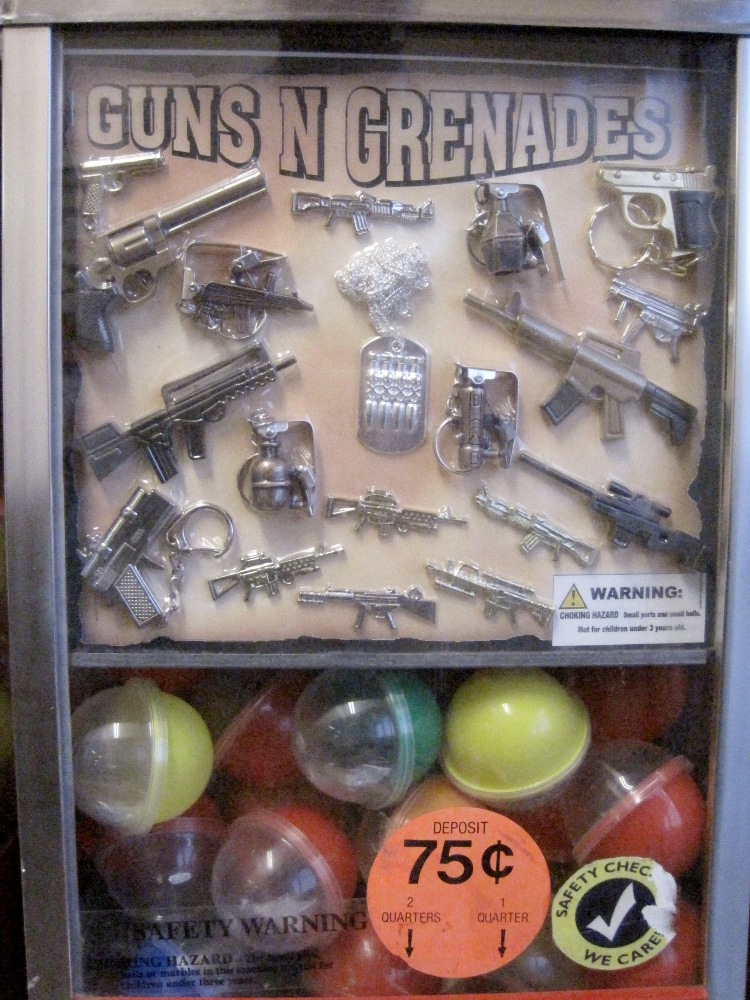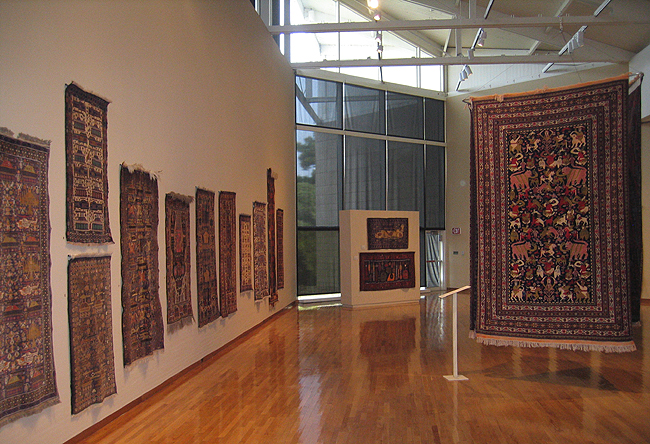John Jay is mounting an exhibition of about 60 war rugs from the Warrug.com collection. The show will open in early September and I will be giving a lecture, and a reception will be held, on September 16 in the galleries at the school. Update to follow.
Warrug.com rug in Wired Story about Growing the Afghan Carpet Industry

The rug in the photo was shown at Denison University in Ohio, and it will be on display at a show at the John Jay College of Criminal Justice in Manhattan in September and October. It is also the invitation post card image. This pattern turned into Soviet Exodus rugs which turned into WTC rugs and Tora Bora rugs.
North Dakota Vending Machine

Only in the west, only in the west!
Status Update
Warrug.com will begin a period of hibernation soon. All rugs and war rug information will remain on line, but rugs will only be shipped once a month. If you are interested in any rugs, please email the rug number via the contact form, and one of us will reply regarding availability and shipping date. If you want to reach us urgently or to speak with Kevin please call 800-781-0153. Thanks!
As mentioned in the New York Times, Kevin Sudeith will be spending a year on the road making petroglyphs (and impressions of petroglyphs) in the wildernesses of the Western United States. To follow his adventure please see Kevin’s travel blog or to see examples of his petroglyphs please visit petroglyphist.com.
New York Times Covers Closure of Warrug.com’s Showroom
Corey Kilgannon has a story in the New York Times about the temporary closure of Warrug.com’s showroom in LIC so that Kevin Sudeith can spend a year making petroglyphic rock carvings in the wildernesses in the western United States.
Mr. Sudeith, who is also an artist, is declaring an armistice in his war-rug business so he can travel out West for a year to create petroglyphs, or rock engravings. The 400 rugs in his dusty basement warehouse (a former speakeasy) on Vernon Boulevard will be put in refrigerated storage.
New Exhibition LInks
I’ve updated links to exhibitions to which warrug.com has loaned war rugs.
Van Every/Smith Galleries at Davidson College
NY Times Review of of Esso Gallery Show in NY
Miami University Art Museum Show, details of Curation and and Reviews.
Denison Musuem. Intro and examples

New Rugs Posted
I have posted about 30 new war rugs. They range from really beautiful early war rugs from the 1980’s to some excellent contemporary war rugs.
Contemporary pictorial war rug showing American helicopters in Herat.
There are some new Obvious Weapons War Rugs
|
|
|
There are also a couple of Ten Tank style war rugs like these:
|
|
|
|
There are also some new examples of subtle weapons war rugs.
|
|
|
|
And some of the most interesting and timely new rugs are pictorial war rugs. From left to right: 2007 Sumac and pile war rug, Ghazni and Jam Minaret war rug with Coalition aircraft, and a modern city scene.
|
|
|
|
Please contact with comments or purchase inquiries.
Photographs from the Front Line in Helmand, Afghanistan
Warp Depression Explained
One of the most confounding rug terms for people to understand is “warp depression.” Each pile knot is tied around two warp threads forming two “nodes” seen from the back of the rug. The two warp threads may sit in a variety of angles relative to one another. The example shown below has moderate warp depression, what we call “corduroy” in war rug descriptions.
The obvious dark lines running vertically through the photo are the shadow cast by the outer edge of the upper node. A single knot is outlined in a black rectangle.
When counting knots one counts the nodes on the back. When the warps are on the same plane, not depressed, one counts every other node (because each knot makes two nodes, one around each warp to which the knot is tied). When warps are fully depressed, one counts each visible node as one knot because the other node is depressed out of view. Dealers talk about “double knotted” rugs which is fancy way of saying full warp depression.
The key to tell if warps are depressed, and get an accurate knot count, is look at the face of a rug and find a vertical line made of single column of knots. Next look at that line on the back and see how nodes are arranged. If there is only one visible node the warps are fully depressed. If there are two nodes visible and they are on one plane the warps are not depressed at all.

